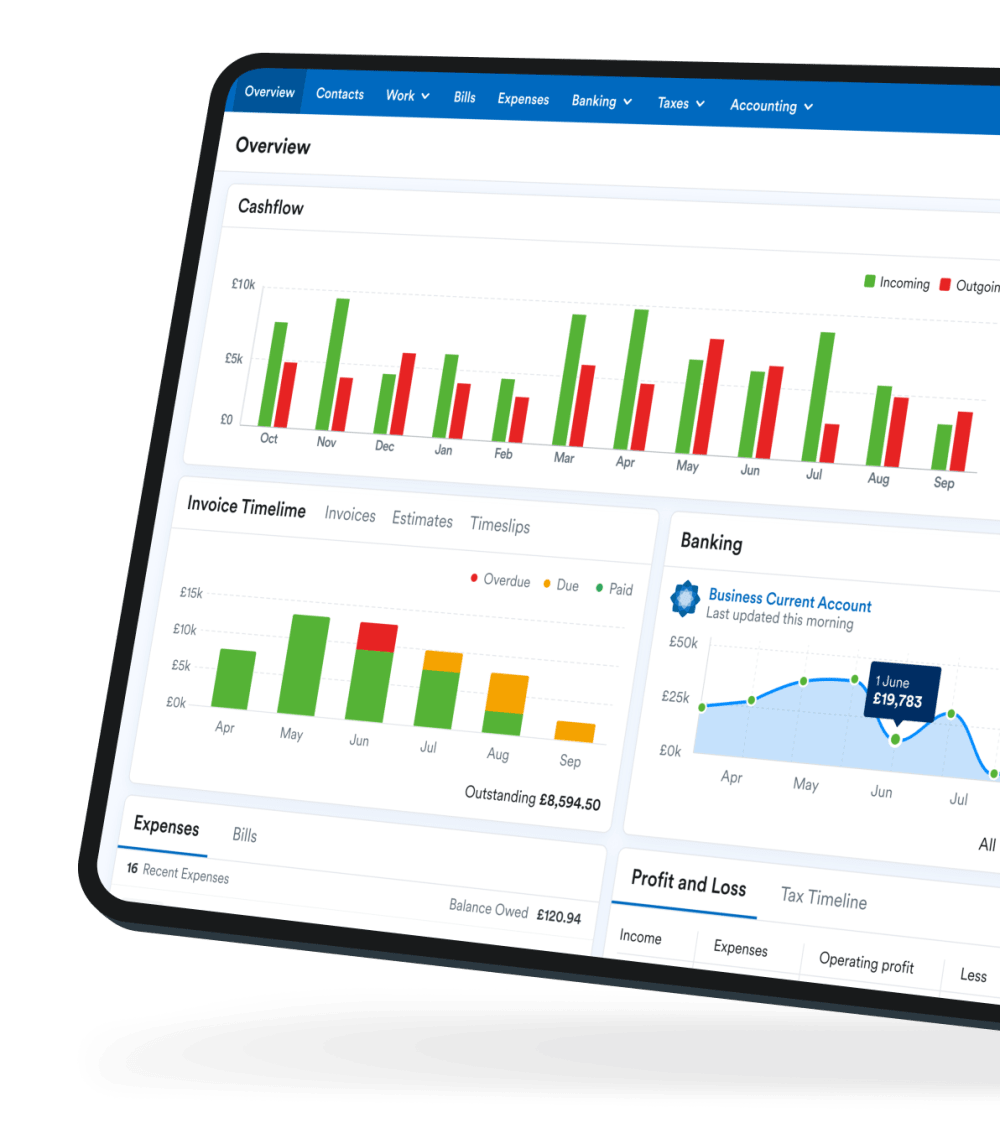How to organise your financial paperwork

If you feel like you’re drowning under paperwork in your small business, you’re not alone. In a study, small business owners reported that they spend 1-3 hours every working day on administrative tasks, and nearly half felt like they had to work out of hours to get everything done.
Paperwork may be an unavoidable part of running a business, but a well-organised system can save you a lot of time and hassle, especially when you’re in a hurry and need to find something fast. Here are our top tips for organising your paperwork, so you can lay hands on any document you need.
What financial paperwork do you have to keep?
UK businesses have to store most of their financial records for at least six years, but the good news is that these don’t necessarily have to be paper copies. HMRC will accept digital versions of most financial documents, so you can store these on your computer without the need to keep huge filing cabinets full of paper in your basement. The exception is some tax documents - HMRC require you to store non-VAT tax documents in their original format, for example interest certificates or dividend vouchers. That means that if you received a paper dividend voucher, you’ll need to keep a paper copy as well as your digital backup. If, however, you received your dividend voucher in .pdf, you don’t need a paper copy, you just need to retain the original .pdf.
As for the kind of documents you’ll need to keep, these should include:
- Invoices - all copies of invoices that you’ve sent to customers
- Bank statements - copies of your bank transactions to show the money that’s come into your business and what’s been spent
- Bills - copies of any bills or payments that your suppliers send you
- Expense receipts - details of which items/services you’ve spent money on out of your own pocket
- Tax documents - all correspondence with HMRC and tax-related documents
All of those documents in paper format can take up a lot of space, so definitely consider digitising your documents. You can do this by investing in an inexpensive scanner like a Doxie, then storing the files securely. It’s a good idea to keep at least one copy of everything in secure offsite storage, for example on a cloud storage service like Google Drive or Depositit.
How should you organise your files?
The exact filing method you use isn’t as important as just having a well thought-out method that makes it easy to find information when you need it. If you’d like a system to get you started, we suggest one of these methods:
A filing system for smaller businesses:
If you don’t issue lots of invoices or estimates every month, you may find that a simplified filing system could serve you best. In this method, first create a folder for every year you’ve been in business, for example, folders for 2019 and 2020.
Then, create a series of sub-folders in each of these years; one for each type of document you want to store. So that would include Invoices, Bank Statements, Bills, Expense Receipts and Tax Documents.
So your final folder could look like:
2019
- Invoices
- Invoice 134 - Client A
- Invoice 135 - Client B
- Bank Statements
- Jan 2019
- Feb 2019
- Bills
- Expense receipts
- Tax documents
2020
- Invoices
- Bank statements
- Bills
- Expense receipts
- Tax documents
A filing system for larger businesses
As your business grows, you are likely to need to manage more of these kind of documents, so the yearly folders may not work as effectively.
Instead, try creating a folder for each type of document (ie Invoices, Bank Statements, Bills, Expense Receipts and Tax Documents) and then create sub-folders based around your customer names or the dates the documents are sent.
So your final system could look like:
Invoices
- Client A
- Invoice 134
- Invoice 135
- Client B
- Invoice 314
- Invoice 315
Bank Statements
- Jan 2019
- Feb 2019
Reference numbers
HMRC requires that you give each invoice a unique reference number, and it’s a good idea to add a reference number to your other documents as well, as this will make it easier to search for a specific item.
If you’re a smaller business with a lower volume of paperwork, you may find the easiest way to reference documents is to just count up - for example, you may start at Invoice 001 and for each new invoice you issue, just count up to 002, 003, etc.
If you generate a lot of paperwork each month, however, you may find that this system is too simplistic. Instead, you could sequence your documents according to client or project, for example ClientA-001 or ProjectX-001.
How to keep it going
Once you’ve got your financial paperwork organised and securely stored online, we recommend dedicating small chunks of time every week to keep it going, instead of waiting for a monthly or quarterly update. When your books are well organised, adding a new expense can take just two minutes, and you won’t have to worry about a pile of receipts building up on your desk. For more tips about how to manage your books day to day, check out our guide here.
Disclaimer: The content included in this guide is based on our understanding of tax law at the time of publication. It may be subject to change and may not be applicable to your circumstances, so should not be relied upon. You are responsible for complying with tax law and should seek independent advice if you require further information about the content included in this guide. If you don't have an accountant, take a look at our directory to find a FreeAgent Practice Partner based in your local area.
